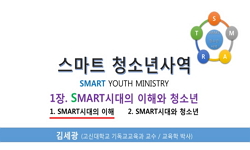The Korea International Cooperation Agency (KOICA) and Yonsei Global Health Center developed and implemented the school-based obesity prevention intervention with the aim of preventing the development of excess weight among Peruvian adolescents. The p...
http://chineseinput.net/에서 pinyin(병음)방식으로 중국어를 변환할 수 있습니다.
변환된 중국어를 복사하여 사용하시면 됩니다.
- 中文 을 입력하시려면 zhongwen을 입력하시고 space를누르시면됩니다.
- 北京 을 입력하시려면 beijing을 입력하시고 space를 누르시면 됩니다.
Evaluating the implementation process and the effectiveness of a school-based obesity prevention intervention in Peru
한글로보기https://www.riss.kr/link?id=T15668494
- 저자
-
발행사항
[Seoul] : Graduate School, Yonsei University, 2020
-
학위논문사항
학위논문(박사) -- Graduate School, Yonsei University , Department of Health Administration , 2020.8
-
발행연도
2020
-
작성언어
영어
-
주제어
비만예방 ; 청소년 ; 학교보건 ; 실행 ; Obesity prevention ; Adolescent ; School Health ; Implementation ; KOICA ; ODA ; Peru
-
발행국(도시)
서울
-
기타서명
페루 학교 비만 예방 프로그램의 실행과 효과 평가
-
형태사항
x, 227 p. : 삽화 ; 26 cm
-
일반주기명
지도교수: Eun Woo Nam
-
UCI식별코드
I804:11046-000000525225
- 소장기관
-
0
상세조회 -
0
다운로드
부가정보
다국어 초록 (Multilingual Abstract)
In order to identify the targeted high-school adolescents’ initial weight status, social & epidemiological, behavioral & environmental, educational & ecological, and administrative & policy factors were assessed prior to the intervention. Following, the effectiveness of the three-year intervention was analyzed by process, impact, and outcome evaluation. For this, propensity score matching was first introduced in order to cope with the influence of confounding on study subjects before and after the intervention. Then, pre-intervention and post-intervention matched samples were analyzed through the comparison of the experimental and control group. For outcome variables, difference-in-difference analysis was utilized to assess the effect of the intervention over time. Additionally, intervention-related documents were analyzed and key-informant in-depth interviews were conducted with intervention participants to better understand the results of the quantitative analysis.
The effect of carrying out the intervention was analyzed by process evaluation. Students in the experimental group were on average satisfied with the education and environmental components of the intervention, in particular, the activities developed to improve the school food and PA environment, as well as nutrition sessions. The qualitative analysis confirmed the aforementioned findings while highlighting different barriers to the program implementation. The analysis of predisposing factor identified an improvement in a more accurate perception of body weight, especially among those overweight and obese. The analysis of reinforcing factors showed a positive change in the number of friends, while analysis of enabling factors identified a greater experience of nutrition education and increasing PA time within the school setting.
The effect of the school-based obesity prevention intervention was analyzed by impact evaluation. Daily consumption of recommended healthy foods of fruits and vegetables significantly increased, consumption of SSB, snacks & cookies decreased, the practice of PA increased and the daily use of videogames significantly decreased. Finally, the effect of the school-based intervention was assessed by outcome evaluation. There was a decrease in the prevalence of overweight and obesity (40% to 29.4%), as well as a significant decrease in BMI (-1 point DID effect after controlling for all independent variables) among those overweight and obese. Furthermore, it was found that the practice of PA, frequency of meals a day, close friends, and the experience of more PE classes were significantly associated with overweight and obese adolescents' BMI. The implementation process evaluation highlighted contextual factors, participant response and facilitation strategies mainly affected the development of activities.
In conclusion, this study showed that the KOICA school-based obesity prevention intervention improved the adolescents’ accurate body perception, improved relations with peers, the intake of healthy recommended food, decreased intake of unhealthy foods, the practice of PA, and frequency of meals a day. In this sense, there is a need to ensure schools have access to sufficient sport and recreation equipment to increase the opportunities to be active in this setting and for nutrition subjects to be considered to be included in the school curriculum. Also, to encourage parent participation in activities promoting healthy behaviors, and to maintain peer-lead programs that promote the mentioned healthy behaviors in students and strengthen social relations. In addition, thorough process evaluation should be done continuously to identify factors affecting the functioning of the intervention and take necessary action to adapt activities.
Keywords: Obesity prevention, Adolescent, School Health, Implementation, KOICA, ODA, Peru
The Korea International Cooperation Agency (KOICA) and Yonsei Global Health Center developed and implemented the school-based obesity prevention intervention with the aim of preventing the development of excess weight among Peruvian adolescents. The purpose of this study is to analyze the implementation process and the effect of carrying out the mentioned intervention in low-income areas of Peru (Comas and Callao), as part of an ODA project, by using a mixed-methods approach and taking the PRECEDE-PROCEED model as basis.
In order to identify the targeted high-school adolescents’ initial weight status, social & epidemiological, behavioral & environmental, educational & ecological, and administrative & policy factors were assessed prior to the intervention. Following, the effectiveness of the three-year intervention was analyzed by process, impact, and outcome evaluation. For this, propensity score matching was first introduced in order to cope with the influence of confounding on study subjects before and after the intervention. Then, pre-intervention and post-intervention matched samples were analyzed through the comparison of the experimental and control group. For outcome variables, difference-in-difference analysis was utilized to assess the effect of the intervention over time. Additionally, intervention-related documents were analyzed and key-informant in-depth interviews were conducted with intervention participants to better understand the results of the quantitative analysis.
The effect of carrying out the intervention was analyzed by process evaluation. Students in the experimental group were on average satisfied with the education and environmental components of the intervention, in particular, the activities developed to improve the school food and PA environment, as well as nutrition sessions. The qualitative analysis confirmed the aforementioned findings while highlighting different barriers to the program implementation. The analysis of predisposing factor identified an improvement in a more accurate perception of body weight, especially among those overweight and obese. The analysis of reinforcing factors showed a positive change in the number of friends, while analysis of enabling factors identified a greater experience of nutrition education and increasing PA time within the school setting.
The effect of the school-based obesity prevention intervention was analyzed by impact evaluation. Daily consumption of recommended healthy foods of fruits and vegetables significantly increased, consumption of SSB, snacks & cookies decreased, the practice of PA increased and the daily use of videogames significantly decreased. Finally, the effect of the school-based intervention was assessed by outcome evaluation. There was a decrease in the prevalence of overweight and obesity (40% to 29.4%), as well as a significant decrease in BMI (-1 point DID effect after controlling for all independent variables) among those overweight and obese. Furthermore, it was found that the practice of PA, frequency of meals a day, close friends, and the experience of more PE classes were significantly associated with overweight and obese adolescents' BMI. The implementation process evaluation highlighted contextual factors, participant response and facilitation strategies mainly affected the development of activities.
In conclusion, this study showed that the KOICA school-based obesity prevention intervention improved the adolescents’ accurate body perception, improved relations with peers, the intake of healthy recommended food, decreased intake of unhealthy foods, the practice of PA, and frequency of meals a day. In this sense, there is a need to ensure schools have access to sufficient sport and recreation equipment to increase the opportunities to be active in this setting and for nutrition subjects to be considered to be included in the school curriculum. Also, to encourage parent participation in activities promoting healthy behaviors, and to maintain peer-lead programs that promote the mentioned healthy behaviors in students and strengthen social relations. In addition, thorough process evaluation should be done continuously to identify factors affecting the functioning of the intervention and take necessary action to adapt activities.
Keywords: Obesity prevention, Adolescent, School Health, Implementation, KOICA, ODA, Peru













